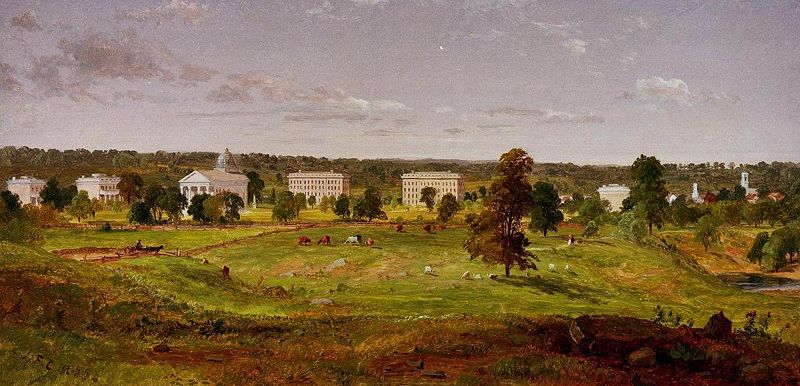The Society for College and University Planning: Ann Arbor, Michigan
Core standards for college campus land use typically encompass a range of factors including zoning, building placement, infrastructure, environmental considerations, accessibility, and aesthetics. While specific standards may vary depending on the institution and its location, here are some common core standards:
- Zoning and Land Use Regulations: Compliance with local zoning ordinances and land use regulations governing the allowable uses of the campus land, such as residential, academic, administrative, recreational, and green spaces.
- Building Placement and Density: Guidelines for the placement, size, and density of buildings on the campus to optimize land use, preserve green spaces, and maintain a cohesive campus layout.
- Pedestrian and Bicycle Infrastructure: Design standards for sidewalks, crosswalks, bike lanes, and pathways to ensure safe and convenient pedestrian and bicycle circulation throughout the campus.
- Vehicle Circulation and Parking: Standards for vehicular circulation, parking lot design, and parking space allocation to accommodate the transportation needs of students, faculty, staff, and visitors while minimizing congestion and maximizing safety.
- Utilities Infrastructure: Requirements for the provision of essential utilities such as water supply, electricity, sewage, telecommunications, and internet connectivity to support the functional needs of campus facilities.
- Environmental Conservation: Standards for sustainable landscaping, stormwater management, energy efficiency, waste management, and environmental stewardship to minimize the campus’s environmental footprint and promote ecological sustainability.
- Accessibility: Compliance with accessibility standards outlined in the Americans with Disabilities Act (ADA) to ensure that campus facilities, pathways, and amenities are accessible to individuals with disabilities, including wheelchair users, visually impaired individuals, and those with mobility impairments.
- Historical and Cultural Preservation: Guidelines for the preservation and adaptive reuse of historical buildings and cultural landmarks on the campus, as well as provisions for incorporating cultural elements and artwork into new development projects.
- Aesthetic Design Guidelines: Standards for architectural design, landscaping, signage, lighting, and public art to enhance the visual appeal and cohesive character of the campus environment while reflecting the institution’s identity and values.
- Safety and Security Measures: Implementation of safety and security measures, such as lighting, surveillance cameras, emergency call boxes, and landscaping strategies, to ensure a safe and secure campus environment for students, faculty, staff, and visitors.
These core standards provide a framework for the effective planning, development, and management of college campus land use, supporting the institution’s educational mission, fostering a vibrant campus community, and enhancing the overall quality of campus life.
Join us today at 16:00 UTC when we update our understanding of titles in the various applicable standards catalogs that affect the safety and sustainability of these “cities-within-cities”
Related:









